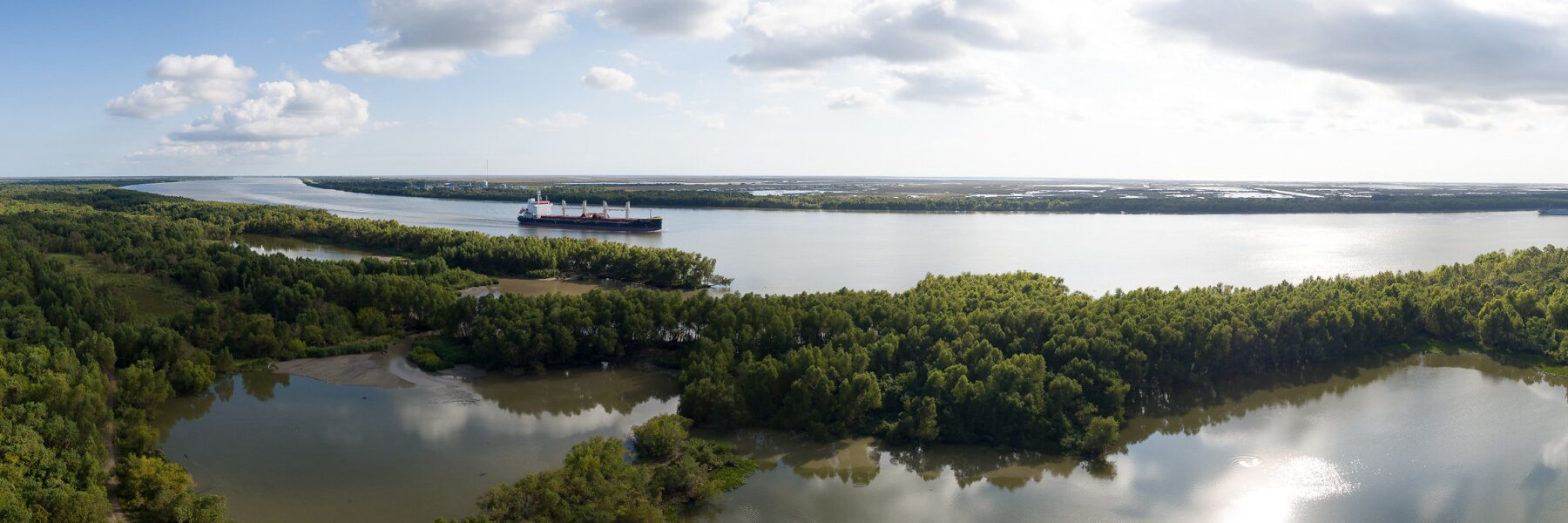On average, a football field of land disappears into the Gulf of Mexico every 100 minutes. Over thousands of years, the Mississippi River carried sediment to the Louisiana coastline, building up marshes, wetlands and new land.
But today, because of canals and levees that constrict and confine the path of the river, the sediment cannot reach the delta to replenish the eroding wetlands.
Since the 1930s, Louisiana has lost close to 2,000 square miles of wetlands, an area roughly the size of Delaware.
Our Economy Depends on a Healthy Louisiana Coast
The Louisiana coast is an economic engine for the nation. Threats to the stability and health of the coast from land loss, rising seas, severe storms and other environmental changes put entire industries at risk.
Impacts to the health of the Louisiana coast reverberate throughout our national economy and local communities. Continued land loss threatens up to $7.6 billion a year in direct costs to the nation’s economy and billions more in potential indirect costs.
Natural and Man-Made Disasters Have Ravaged the Coast
The dramatic loss of land along the Gulf Coast from recent hurricanes leaves it even more vulnerable to storms. As the coastal buffer disappears, areas further inland will experience increased storm damage.
Over the next 50 years, Louisiana could face up to $3.6 billion in costs to repair and replace infrastructure destroyed by land loss if the state takes no action to curb it. Up to $138 billion in national business, residential and infrastructure assets could be lost in just one big storm.
Just five years after Hurricane Katrina, an oil rig exploded in the Gulf of Mexico, leaking 210 million gallons of oil into the Gulf. In a region already suffering from the impacts of natural disasters, the oil spill further endangered the Gulf coast’s critical industries, from hospitality and tourism to commercial fishing.
It’s Not Too Late to Curb Land Loss
Recognizing the loss of its coastline as an existential threat to Louisiana’s communities and economy, the state developed a Comprehensive Master Plan for a Sustainable Coast – a 50-year, $50 billion plan to rebuild Louisiana’s coast and its ecosystems.
Louisiana’s Master Plan aims to rebuild and sustain the coast through a series of restoration projects. One critical component of restoring Louisiana’s coast is creating diversions, which allow the Mississippi River to deposit its sediment in the delta and surrounding marshes as it did for over 7,000 years.
Since 2014, about 350 million tons of sediment from the banks of Louisiana’s rivers have washed out to sea. Sediment diversions involve redesigning the river's navigation channel to enable the river’s currents to mimic their natural process of transporting sand and fresh water into nearby basins to restore and maintain wetlands.
Louisiana’s Master Plan would fund 124 restoration projects, including sediment diversions, which over time would collectively build or maintain an estimated 800 square miles of land. Over the next 10 years, the plan prioritizes implementation of several large sediment diversion projects to help curb coastal erosion.
Restoration Will Revive the Coastal Economy
Restoration won’t just protect the coastal environment – it will reinvigorate the local economy. The state of Louisiana estimates that state coastal spending in future years could directly and indirectly create up to 10,300 jobs, $520 million in wages and $1.35 billion in sales each year.
LEARN MORE about how the Walton Family Foundation, our partners and grantees are working to support projects that will reverse land loss, restore critical natural infrastructure and rebuild a Gulf Coast that will sustain its communities for generations to come.




